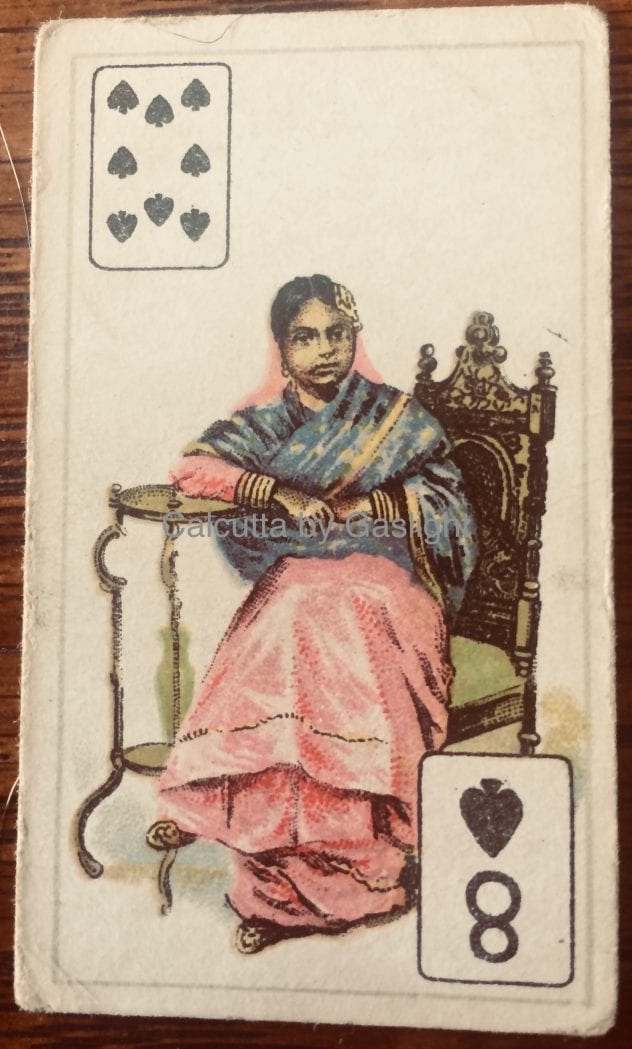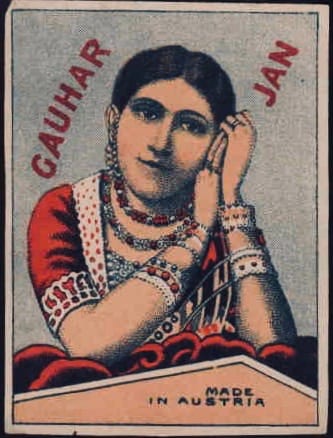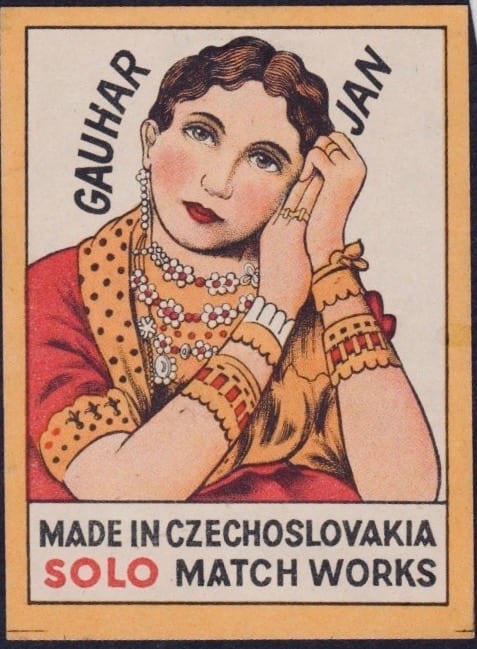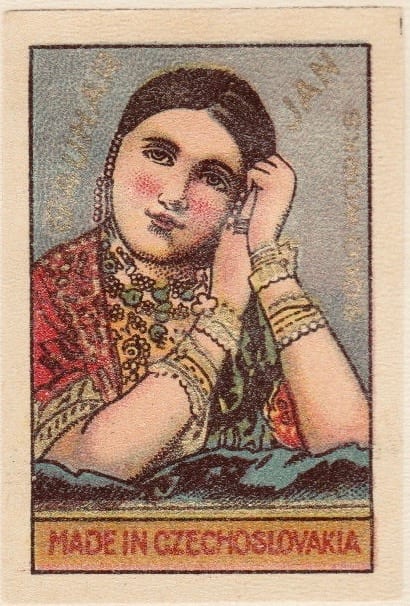Born as Angelina Yeoward in 1873 in Azamgarh, Gauhar Jaan, was one of the greatest stars of the British Raj. One of the best exponents of classical Hindustani music, Gauhar Jaan, like most other classical musicians before her, sang for kings and queens. Patronized by the grand princes and zamindars of the day she achieved an unparalleled fame as a singer and dancer.
What made her stand apart however, was the way she transcended the traditional elite milieu and became a modern celebrity akin to the stars of our times. This was enabled by the developments of the Victorian era. While photography allowed her image to reach a wider, more popular audience, it was the later recording technologies that disseminated her voice. Above all it was the thriving culture of commodity advertising that made her a name and an image recognized throughout the subcontinent. Her face and name featured on calendars, cigarette cards, matchboxes and much else.
Here are some images of her’s on cigarette cards and matchbox labels.
Matchbox Labels featuring Gauhar Jaan printed in Austria and Czechoslovakia.






Wow! Gauhar Jaan, Cigarettes and Buksh Illahi..what a combo for its day!
Lovely piece Projit. Thanks for sharing.
By the way, (silly question) what exactly are/were cigarette cards?
Adverts for the product?
Hemanth
Efficient Marketing Of Cigarette Through Cigarette Packaging
Cigarette boxes in the U.K. always had a specific picture affiliated with it, and you could tell about a brand by just seeing the colour of the pack. Click Here To Know More:
https://marymount.instructure.com/eportfolios/175/Home/_Plain_Cigarette_Packaging__Success_Story_OR_A_Resounding_Failure
Thanks for reading, Hemanth.
Its not a silly question at all. Few people today know of cigarette cards. They emerged in the 1880s as “stiffners” to hold cigarette packets firm. The packets those days were paper packets and hence often got crushed in people’s pockets. Soon however, companies realized they could put advertisements on it. Later they began issuing them as sets, so that people kept buying the same brand to collect the full set of pictures. They were used till about the 1950s and then died out.
Nice. And to imagine what messages are printed on today’s cigarette boxes, especially in India. What a drastic politico-cultural shift!
Thanks for replying Projit.
Thank you Projit.
Fascinating how such an innocuous, functional element in a cigarette packet could be so creatively put to use….and resurrect (as it were) memories of a less anxious time…especially when it comes to tobacco, nay, a time that celebrated tobacco!
Cheers!
You are absolutely right, Hemanth. I think even little functional everyday objects used to have an aesthetic appeal, that has been entirely sacrificed in our contemporary times. Little things, not only cigarette packaging, but biscuit tins, hair oil bottles, candles and so many other such minor everyday objects were designed to look nice and not merely serve a narrow notion of “function”… There is a beautiful little museum in Berlin on the history of everyday objects…I wish someone would create one such for India. But I doubt anyone will be interested…
The Berlin museum sounds fascinating!
Everyday objects and their life histories are complicated projections of people’s lived lives, making them intriguing things to ponder about.
‘Things’ with a thematic curation could excite folks in India, like your cigarette cards 🙂
Hmmm…. You are more optimistic about the new India than I am, Hemanth. I feel most people now are more interested in the latest mobile phone or flat screen TV than old things…:) People hardly go to museums any longer…